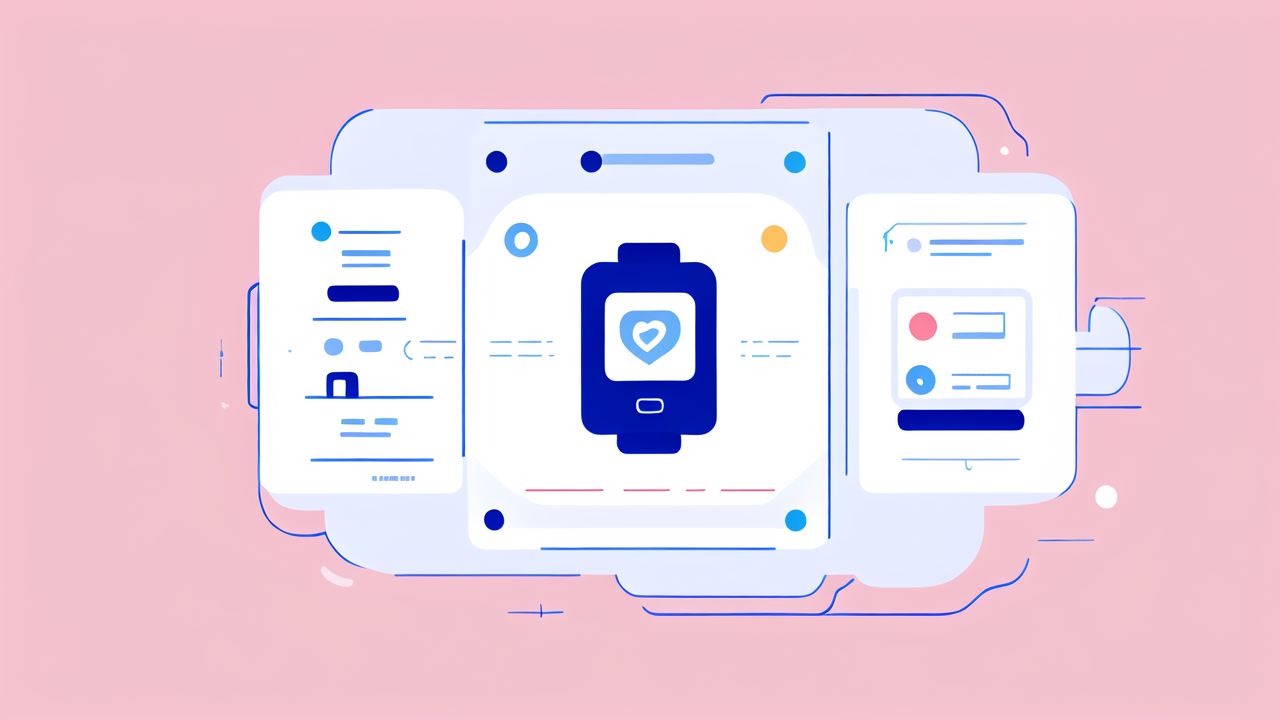Evolution of Fitness Tracking Technology
Early Adoption: The Rise of Wearable Fitness Gadgets
The journey of fitness trackers began with simple pedometers. These devices counted steps and distance traveled. As technology advanced, more features were added. Heart rate monitors came next, offering insights into cardiovascular health.

Early adopters embraced these gadgets with enthusiasm. They saw the potential for improving their fitness routines. The ability to track progress was a game-changer for many. It made exercise more engaging and goal-oriented.
Brands like Fitbit and Garmin led the way in this new market. They introduced sleek, wearable devices that appealed to a wide audience. These gadgets were not just functional, but also fashionable. This helped to drive widespread adoption among fitness enthusiasts.
Innovations in Smart Watch Features
As smart watches evolved, they became more than just fitness trackers. They turned into mini-computers for your wrist. New features were added at a rapid pace. GPS tracking allowed for more accurate distance measurements. This was especially useful for runners and cyclists.
Sleep tracking became a popular feature. It offered insights into sleep patterns and quality. This helped users understand the link between rest and physical performance. Water resistance made these devices suitable for swimming and other water sports.
More advanced sensors were introduced. These could measure blood oxygen levels and even detect irregular heart rhythms. Such features transformed smart watches into powerful health monitoring tools. They began to blur the line between consumer gadgets and medical devices.
Integration with Other Health and Wellness Platforms
Smart watches didn't stop at tracking data. They began to integrate with other health and wellness platforms. This created a more comprehensive approach to personal health management. Users could sync their data with nutrition apps, for example.
Integration with smartphone health apps became seamless. This allowed for a more holistic view of one's health. Data from smart watches could be shared with healthcare providers. This opened up new possibilities for preventive care and early detection of health issues.
Fitness apps like Strava and MyFitnessPal partnered with smart watch makers. This allowed users to get more out of their devices. Social features were added, creating communities of like-minded fitness enthusiasts. Users could share achievements and motivate each other.
Benefits of Smart Watches for Fitness Enthusiasts
Personalized Training Programs
Smart watches have revolutionized personal training. They can create customized workout plans based on user data. These plans adapt to the user's progress and fitness level. This makes them suitable for beginners and advanced athletes alike.

Many smart watches offer guided workouts. These can range from simple stretching routines to high-intensity interval training. Voice coaching provides real-time instructions and motivation. This can feel like having a personal trainer on your wrist.
The ability to set and track fitness goals is a key feature. Users can aim for specific targets in steps, calories burned, or active minutes. The watch provides reminders and encouragement to help reach these goals. This personalized approach makes fitness more achievable and enjoyable for many.
Real-time Data and Performance Metrics
One of the most valuable features of smart watches is real-time data tracking. Users can see their heart rate, pace, and distance covered at a glance. This immediate feedback allows for on-the-spot adjustments to workouts.
Performance metrics go beyond basic stats. Many watches now offer advanced analytics. These can include VO2 max estimates, recovery time recommendations, and training load assessments. Such data helps users optimize their training and avoid overexertion.
For endurance athletes, features like race predictors and pace alerts are invaluable. They can help with race strategy and pacing. Post-workout analysis provides insights into performance trends over time. This data-driven approach can lead to significant improvements in fitness levels.
Encouraging Physical Activity and Mindfulness
Smart watches play a crucial role in promoting daily activity. Move reminders nudge users to stay active throughout the day. Activity rings or similar visual cues make it easy to track progress towards daily goals. This gamification of fitness can be highly motivating.
Many smart watches now include features for mental wellbeing. Guided breathing exercises help manage stress. Mindfulness apps encourage moments of calm during busy days. Some watches even track stress levels based on heart rate variability.
Sleep tracking has become more sophisticated. Watches can now provide detailed sleep stage analysis. This helps users understand their sleep patterns and improve sleep quality. Better sleep often leads to improved physical performance and overall wellbeing.
Ethical and Regulatory Considerations
Privacy Concerns in the Wearable Fitness Industry
As smart watches collect more personal data, privacy concerns have grown. Users worry about how their health information is stored and used. There are questions about who has access to this sensitive data. Companies must be transparent about their data practices.

Data breaches are a significant risk in the wearable industry. Health information is valuable to hackers. Companies need robust security measures to protect user data. Encryption and secure storage methods are crucial.
Users should have control over their data. This includes the ability to delete or export their information. Clear consent processes for data sharing are essential. Companies must balance the benefits of data analysis with user privacy rights.
Compliance with Health and Wellness Regulations
As smart watches offer more health-related features, regulatory oversight increases. In the US, the FDA has started to pay attention to these devices. Some features may require approval as medical devices. This presents challenges for manufacturers.
HIPAA compliance becomes relevant when health data is shared with providers. Companies must ensure their practices meet these strict standards. This includes secure data transmission and storage. User consent for data sharing is crucial.
International regulations add another layer of complexity. Different countries have varying rules for health-related devices. Companies must navigate these regulations to operate globally. This can affect feature availability in different regions.
Future Prospects: The Expansion of Fitness Tracking in the United States
The future of fitness tracking in the US looks promising. Integration with healthcare systems is likely to increase. This could lead to more personalized medical care. Insurance companies may offer incentives for using fitness trackers.
Advances in sensor technology will enable more health metrics to be tracked. Blood glucose monitoring without needles is one exciting possibility. Mental health tracking may become more sophisticated. This could help in early detection of conditions like depression.
As AI improves, smart watches will offer more predictive health insights. They might warn users of potential health issues before symptoms appear. This could revolutionize preventive healthcare. The line between consumer devices and medical tools will continue to blur.
The smart watch revolution is far from over. These devices will play an increasingly important role in personal health management. As technology advances, they will become even more integral to our daily lives. The challenge will be balancing innovation with privacy and ethical considerations.




Leave a comment
This site is protected by hCaptcha and the hCaptcha Privacy Policy and Terms of Service apply.